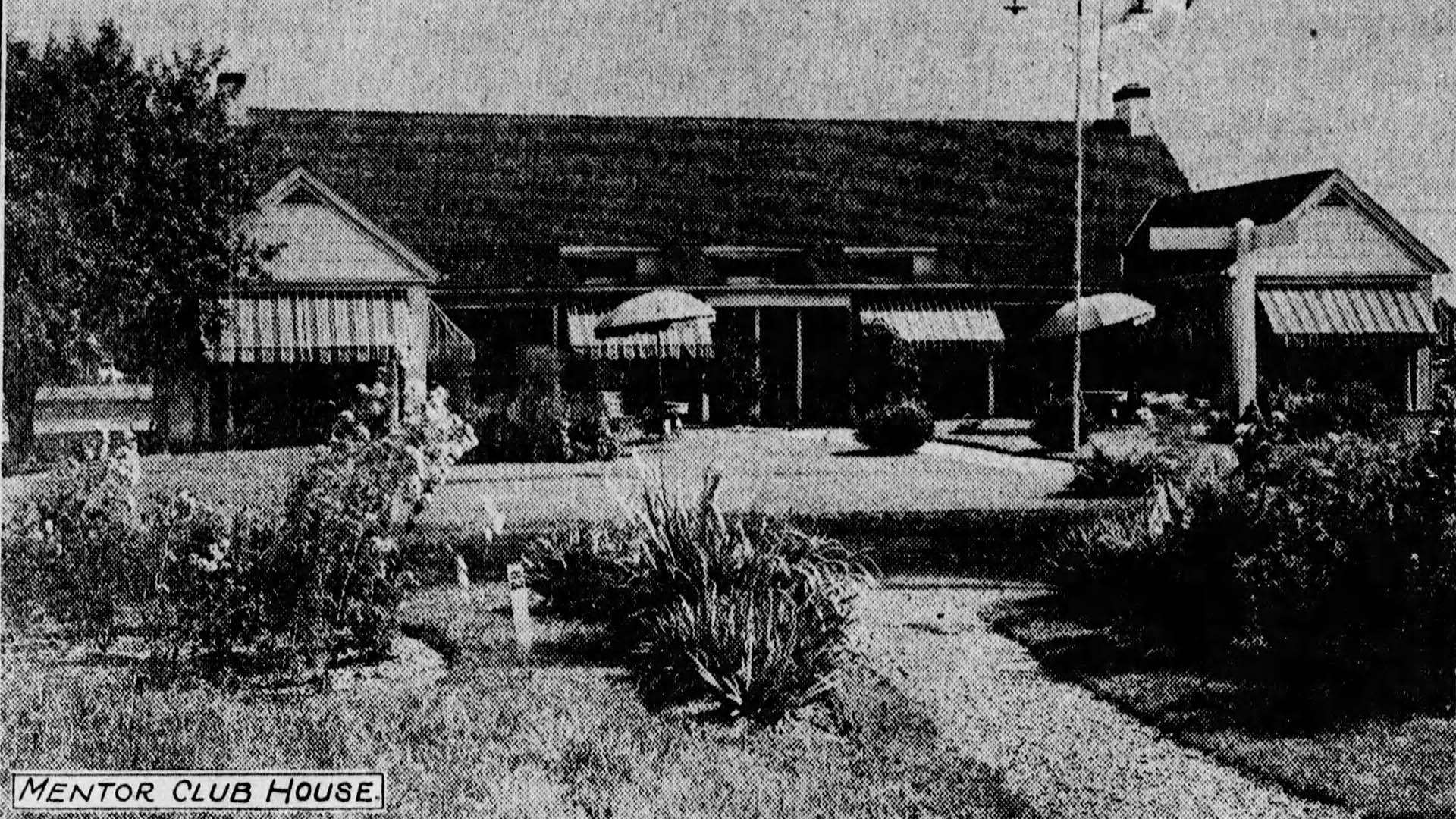
In 1920, the Williams Murphy Company of Cleveland, Ohio began marketing their brand-new development – Mentor Headlands Park – for those seeking summer homes. 50’ x 150’ homesites could be had for as little as $400. A few years later, they expanded their plans by envisioning a year-round development which included beach access as well as country club membership offering bathing, tennis, golf, and more.
The Mentor Headlands Country Club opened as a private nine-hole course in September 1924 and hosted its first championship a month later, which was won by Donald McBride, a well-known Mayfield player, who scored an 80 after circling the course twice.
Course designer Bertie Way was not thrilled with the conditions at the time. He felt that it was rushed as the course was seeded just that June, and several holes in use were considered, in his words, “temporary affairs”.
Originally intended as an 18-hole course, the developers assured him that the next nine would be ready by 1925. Way wasn’t so confident; and he knew what he was talking about. For those unfamiliar with him, he was a renowned course designer in his day whose body of work also included the south course at Firestone Country Club, the Mayfield Country Club, and the Country Club of Detroit. He even designed the old Euclid Golf Club and taught the game to owner John D. Rockefeller.
Way’s vision finally came to life in 1928 when the new nine were finally added and the course was reconfigured to his liking. It was described by leading players and newspapermen as “scenic and wooded” and “said to be one of the finest in the [Cleveland] district.”
One member was the most popular athlete the city of Cleveland had known at the time: baseball great Napolean “Larry” Lajoie.
“Lajoie hits a golf ball just like he does a baseball,” said club head professional Ralph Weidenkopf, “and how that ball does travel! His drives are tremendous, and though his short game isn’t anything extra, he scores mighty well. We’ve never had much success getting him into tournaments, but I’m pretty sure he’ll play on our team”.
They finally got him into tournaments, and he won the club championship in 1928. It would the first of many tournament wins. But they couldn’t get him on the club team. Although he was listed on the roster for the Cleveland District Golf Association championship in 1929, he did not participate.
The great depression hit in October 1929 and the country club went into bankruptcy that winter. It was purchased by E.N. Mathews of Mentor and reopened the next spring as the Black Brook Golf Club which operated until 1938.
In 1951, the course was purchased by Floyd Hopkins and reopened as the semi-private Blackbrook Golf Course. Hopkins gave local golf pro Bob Shave, Jr., 49% ownership in the venture to come onboard. They, and their heirs, would go on to run the course for the next five decades.
In the 1960s, a new clubhouse was constructed, and the course was rerouted. The original first hole is where hole 6 is today and other minor changes were made as well.
In the 1990s, the partners were thinking of moving on. The city had long had an interest in purchasing the course and had made a number of overtures, but the ball really started rolling in November 2004.
A phone call was made, an offer was submitted, a counteroffer followed, and a deal was quickly struck for $6.25 million with two stipulations: 1) the city would agree to operate the golf course for at least five years, and 2) the full-time staff would be retained for at least a year.
Upon hearing the news, a local developer offered an extra $1 million the next day. The group declined, citing the verbal agreement with city leaders.
Legislation was passed and the city took possession of the course in February 2005.
City Parks and Public Works crews got to work immediately on drainage, tree work, path improvements, and more throughout the course.
Current course manager and PGA Pro Tim Ausperk has been with Black Brook since 1990, and he says the support provided by the city to make improvements has been tremendous. Playability and aesthetics have been improved, and the course looks as good as it’s ever been.
A state-of-the-art practice center was added in 2012 with all grass tees, bunkers, and other features, that attract golfers from across the region who are looking to improve their game. That addition also growth in classes and lessons – especially among kids.
And the improvements will continue. In 2025, the parking lot will be expanded and beautified with islands, decorative lighting, and the relocation of utilities underground. Plans for a new clubhouse are also under consideration as well.
Black Brook has welcomed golfers for over a hundred years and the city of Mentor is committed to sustaining the course’s reputation as one of the finest around for the next century as well.
To learn more or book a tee time, visit www.blackbrookgolf.com.
